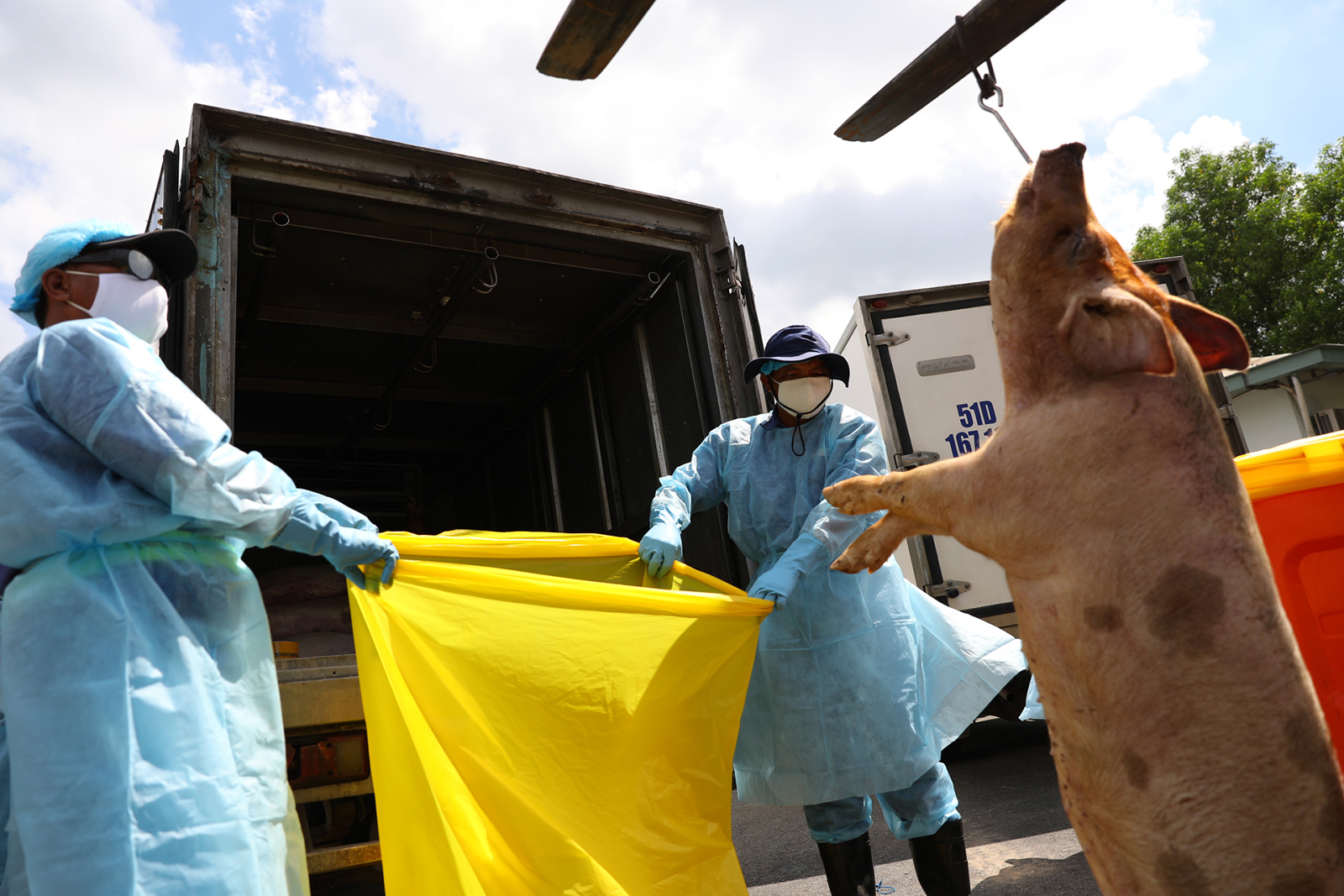It will take roughly a fortnight for the massive number of pigs to be incinerated.
A police raid late last Thursday on the Xuyen A slaughterhouse in Ho Chi Minh City’s outlying Cu Chi District uncovered thousands of pigs being injected with sedatives shortly before being slaughtered.
The slaughterhouse is the largest in the southern metropolis, capable of processing over 5,000 pigs each night in order to supply local markets and supermarkets the following morning.
On Monday, Tran Vinh Tuyen, deputy chairman of Ho Chi Minh City, issued a dispatch requesting that the 3,750 pigs at Xuyen A which tested positive for the sedative drug Combistress be incinerated as a preventative measure against risks of exposing consumers to sedative residues and foot-and-mouth disease.
The move is a break with traditional responses to such incidents in Vietnam, which usually call on waiting for the drugs to excrete from animals’ bodies before they are slaughtered.
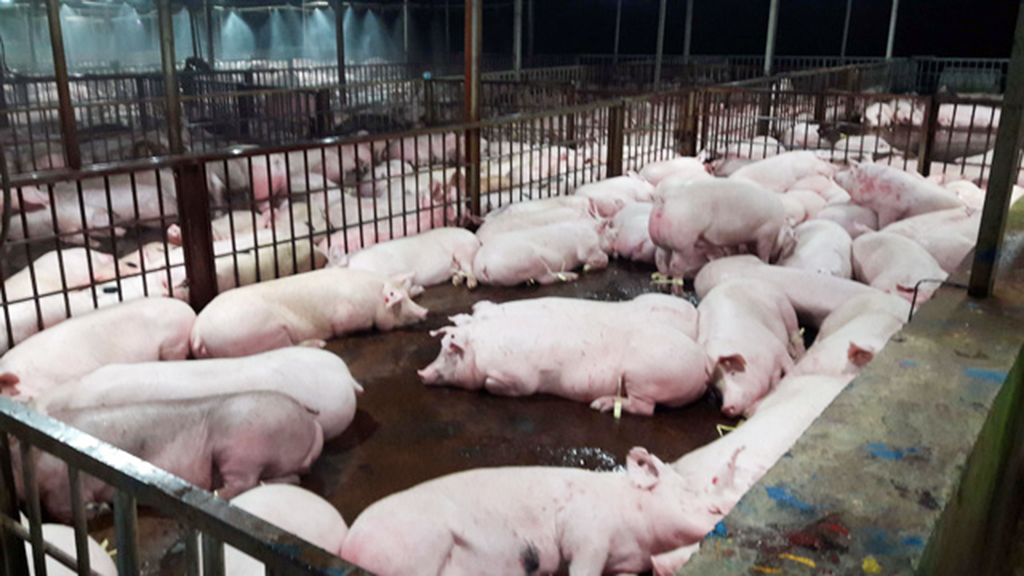 |
| Sedated pigs found during a police raid on the Xuyen A slaughterhouse in Cu Chi District, Ho Chi Minh City. Photo: Police |
The use of sedatives on animals to keep them calm during transportation is allowable by law in Vietnam, though there is typically a week-long waiting period required between sedation and slaughter in order to allow the animals to discharge the drugs.
The practice of injecting pigs with sedatives to calm them before slaughter in an attempt to make their meat softer and more visually appealing can lead to consumers being exposed to drug residues and lead to multiple health risks in humans, according to Dr. Le Thanh Hien, dean of the infectious diseases and animal health faculty at Nong Lam University.
According to the Food Safety Management Board of Ho Chi Minh City, the pigs will be put down before being transported to the Dong Thanh Landfill in rural Hoc Mon District for incineration.
As the landfill’s incinerators can only process 180-250 pigs per day, it is estimated that it will take roughly half a month to handle the massive number of drug-exposed swine.
A source close to Tuoi Tre (Youth) newspaper revealed that the entire incineration process will cost nearly VND4.5 billion (US$198,000) and be carried out at the expense of the violating slaughterhouses.
With the price of pork currently at VND30,000 ($1.32) per kilogram, the violators are on the line for VND10 billion ($440,000) in damages.
Deputy chairman Tran Vinh Tuyen has also requested that the names of 13 slaughter businesses involved be made public and called on tighter controls over pork quality in the city.
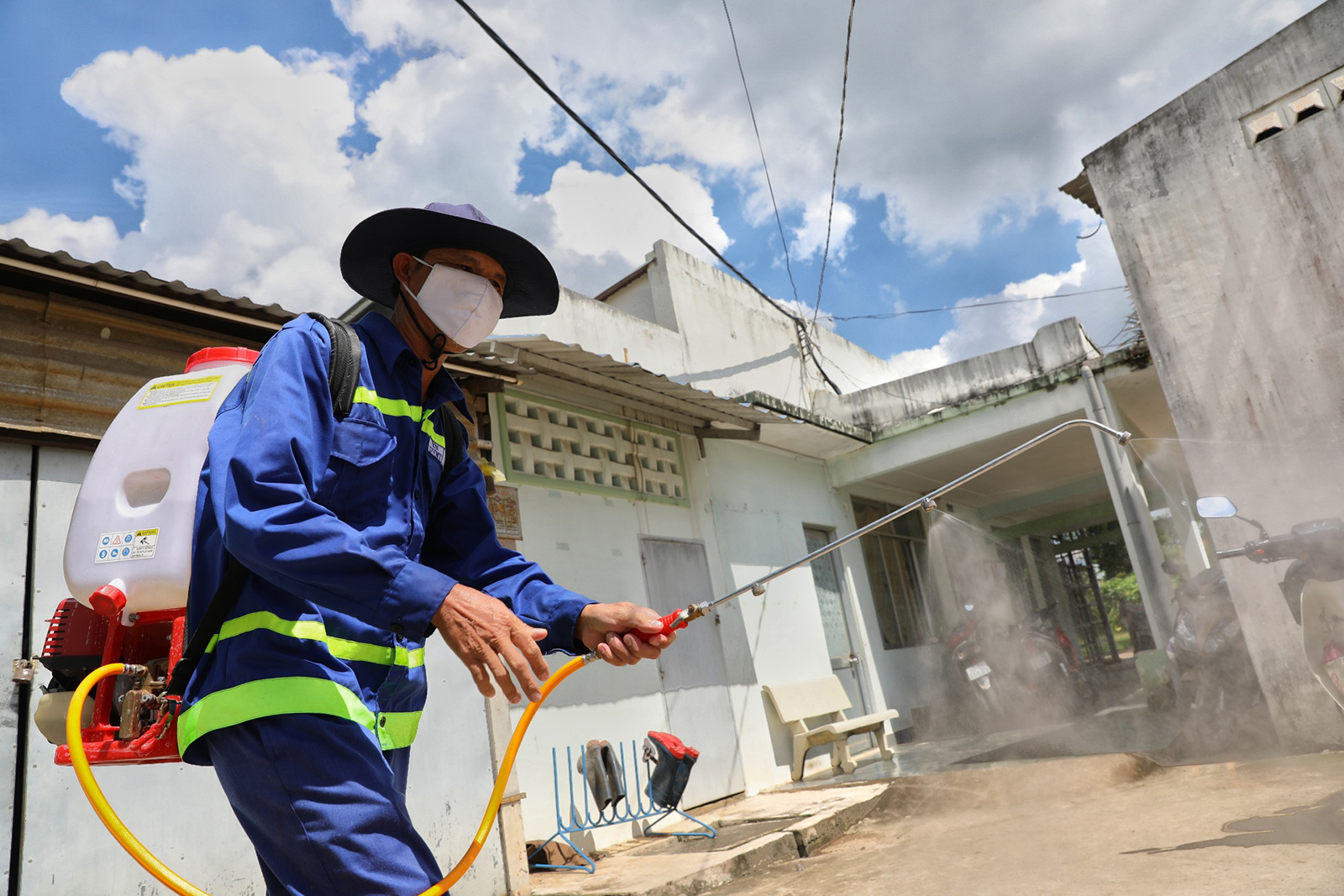 |
| A worker disinfects a section of the Dong Thanh landfill in Cu Chi District, Ho Chi Minh City, where the pigs are stored. Photo: Tuoi Tre |
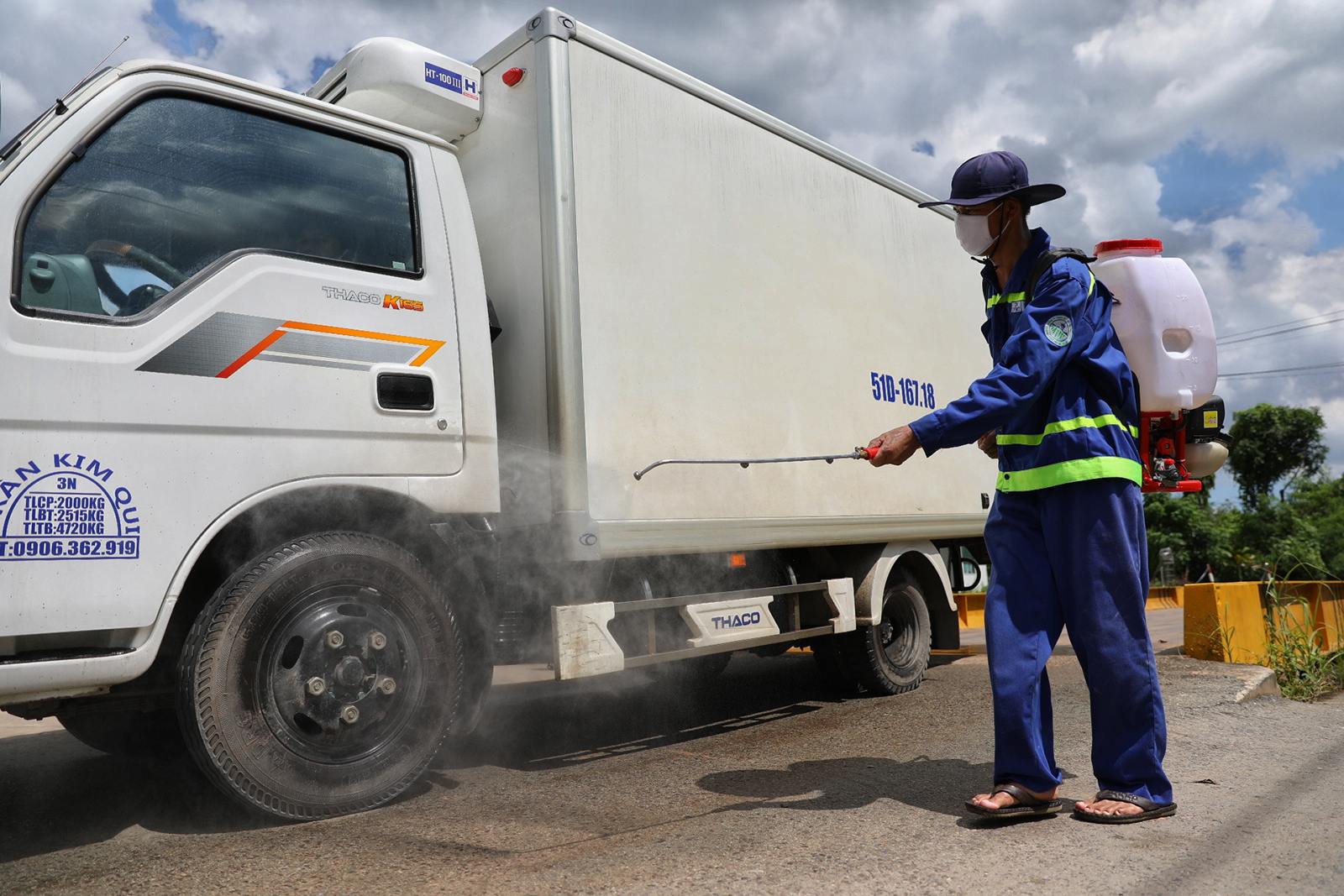 |
| A worker disinfects a truck transporting the pigs. Photo: Tuoi Tre |
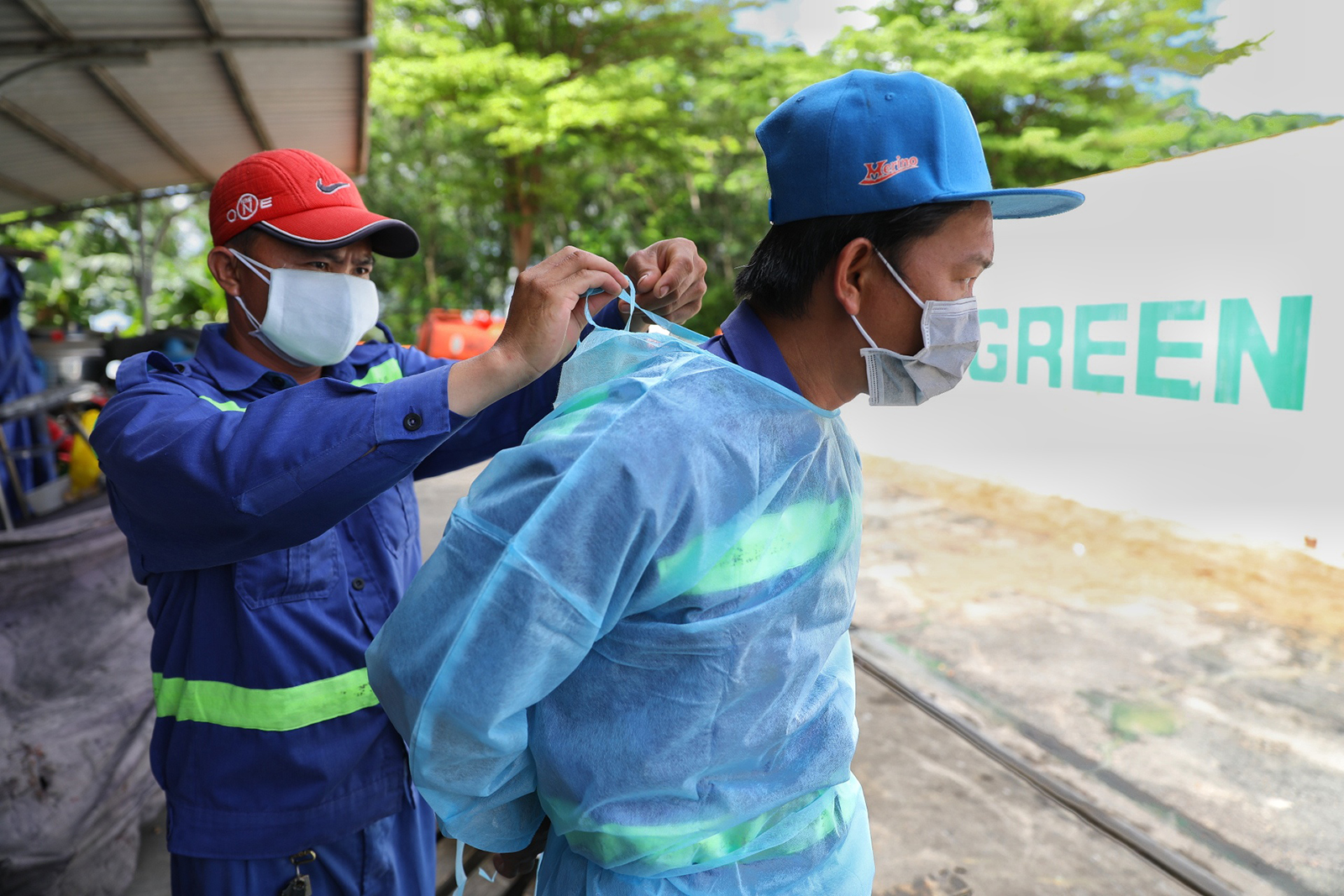 |
| A worker puts on protective gear before making contact with the pigs. Photo: Tuoi Tre |
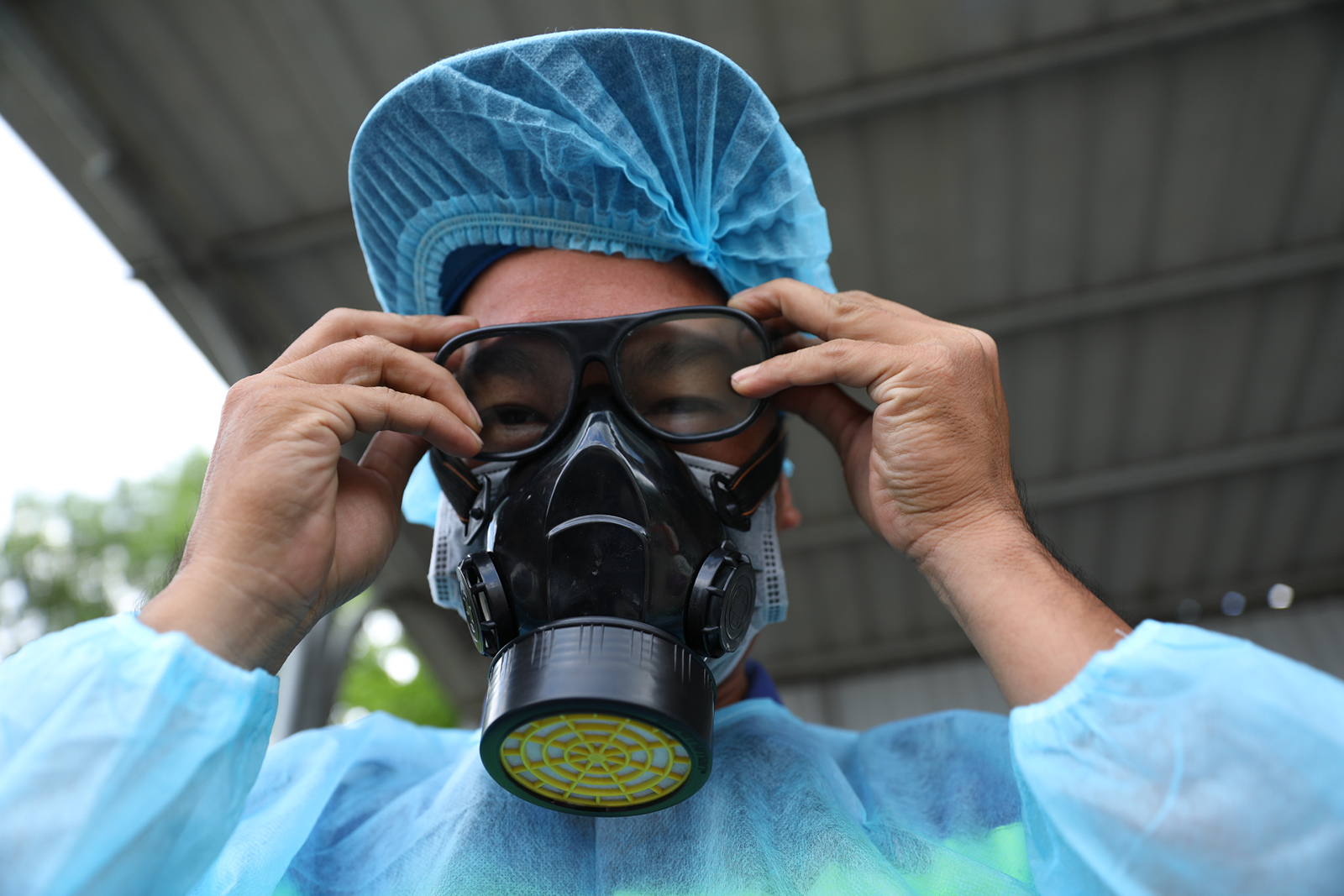 |
| A worker puts on protective gear before making contact with the pigs. Photo: Tuoi Tre |
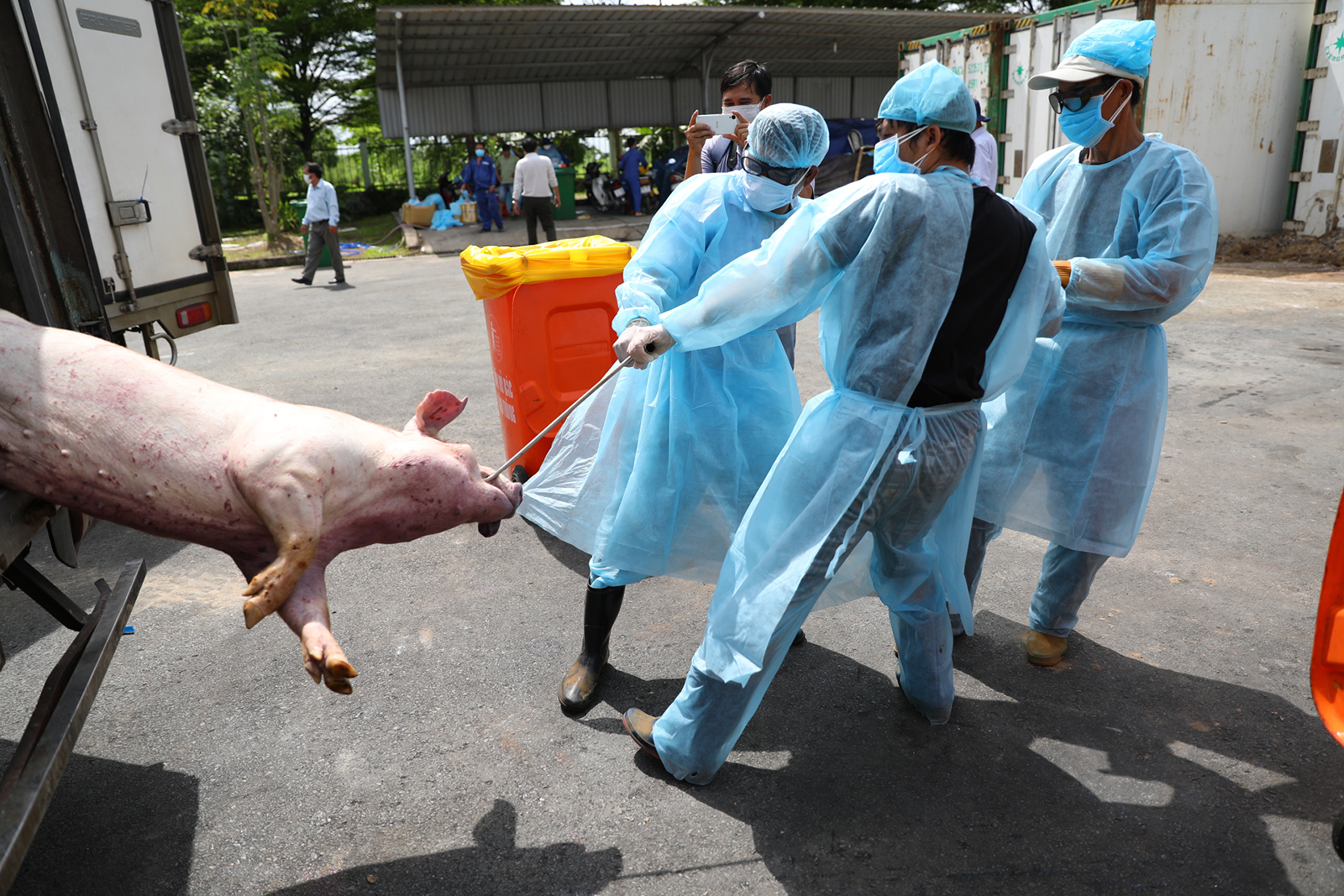 |
| A pig is moved from a truck to the incinerator. Photo: Tuoi Tre |
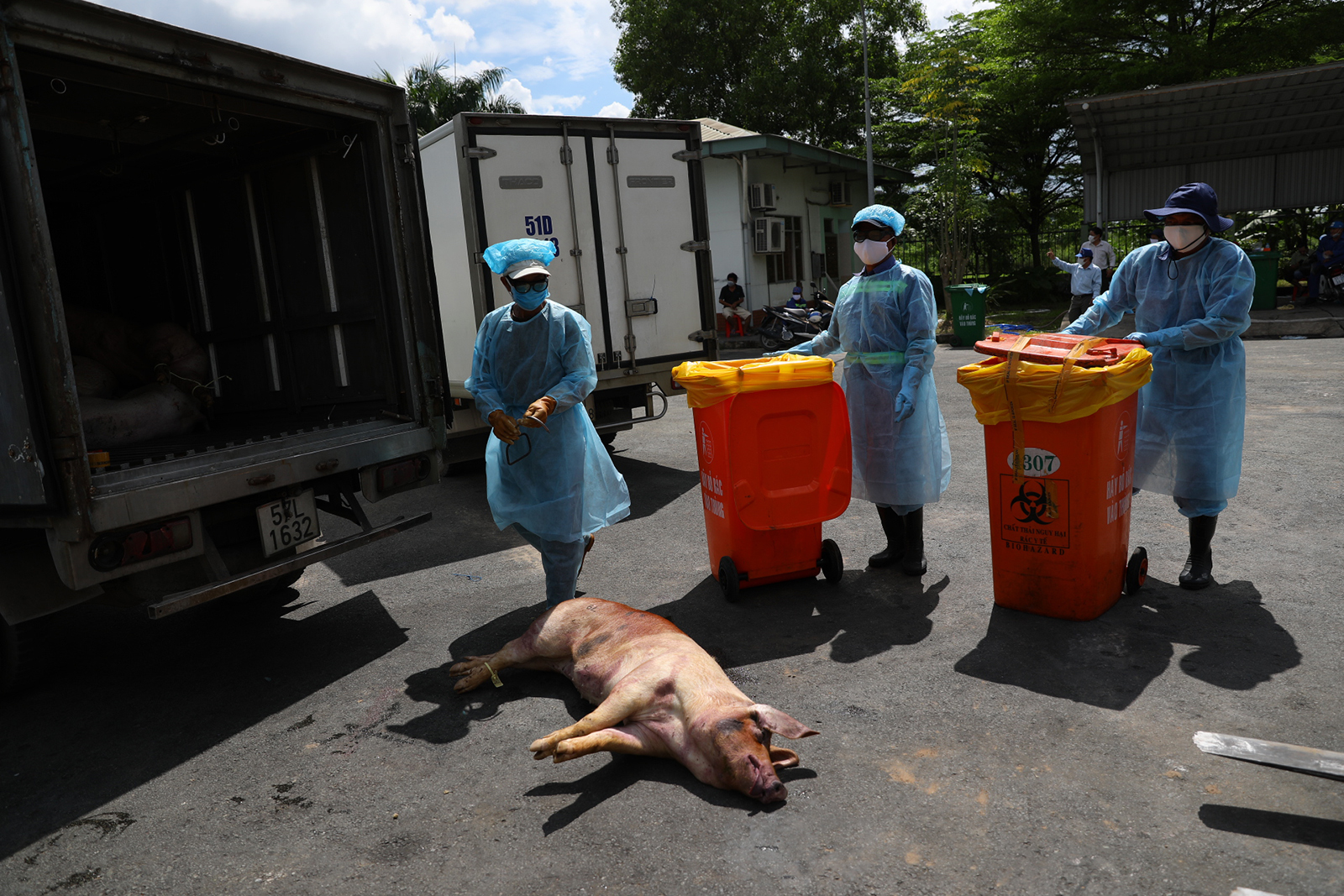 |
| A pig is moved from a truck to the incinerator. Photo: Tuoi Tre |
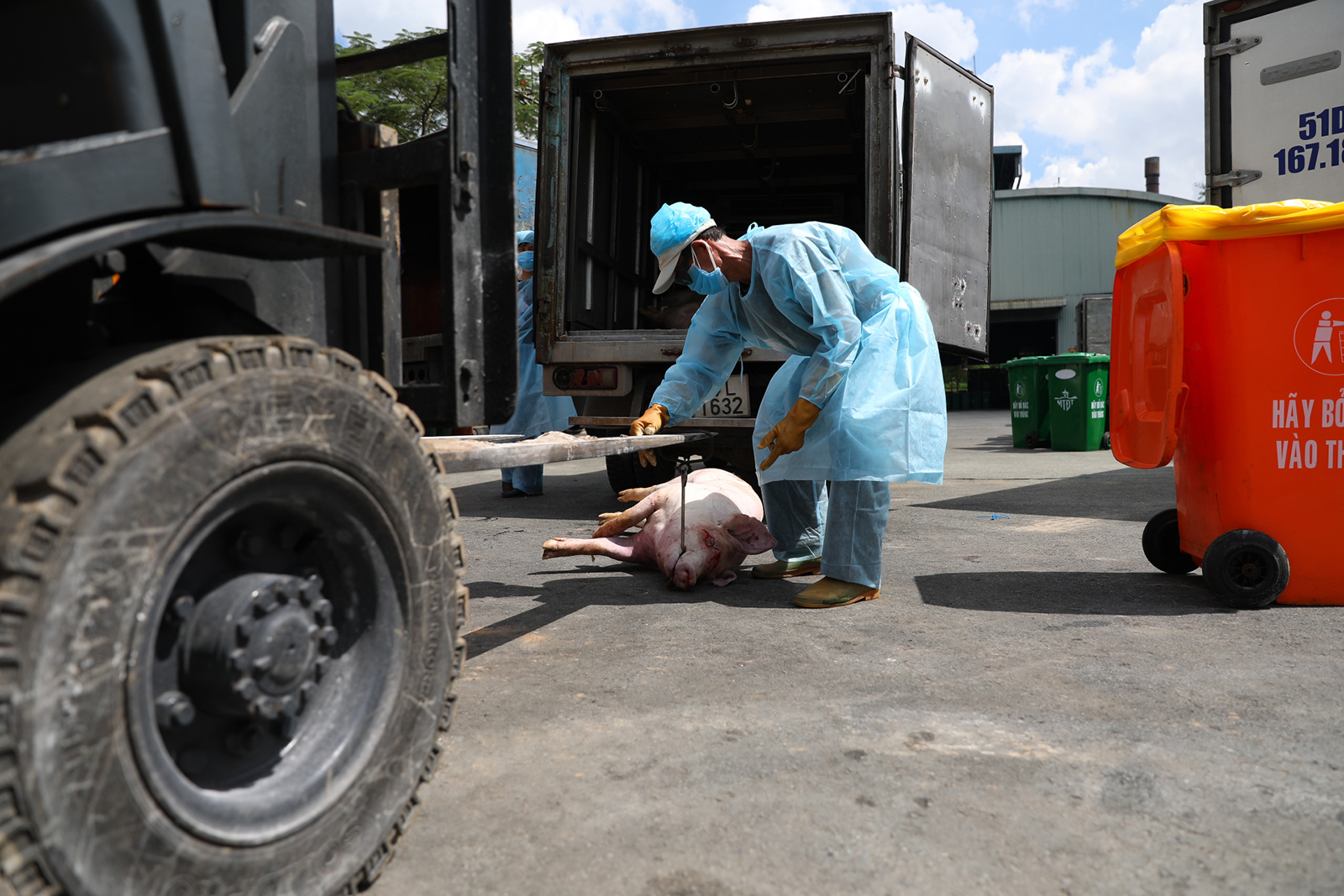 |
| A pig is moved from a truck to the incinerator. Photo: Tuoi Tre |
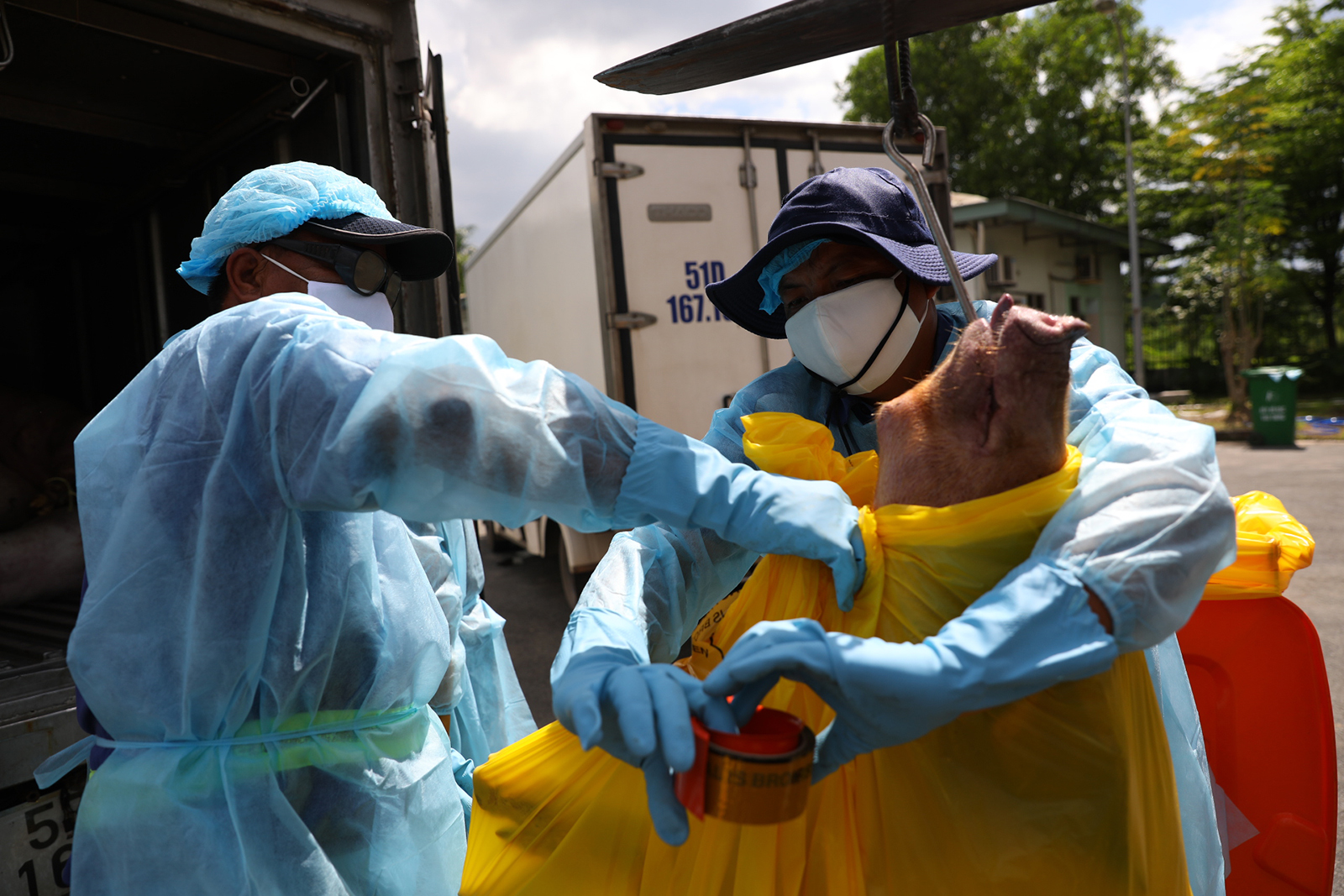 |
| Each pig is wrapped in a plastic bag and put into a garbage bin for storage while waiting to be incinerated. Photo: Tuoi Tre |
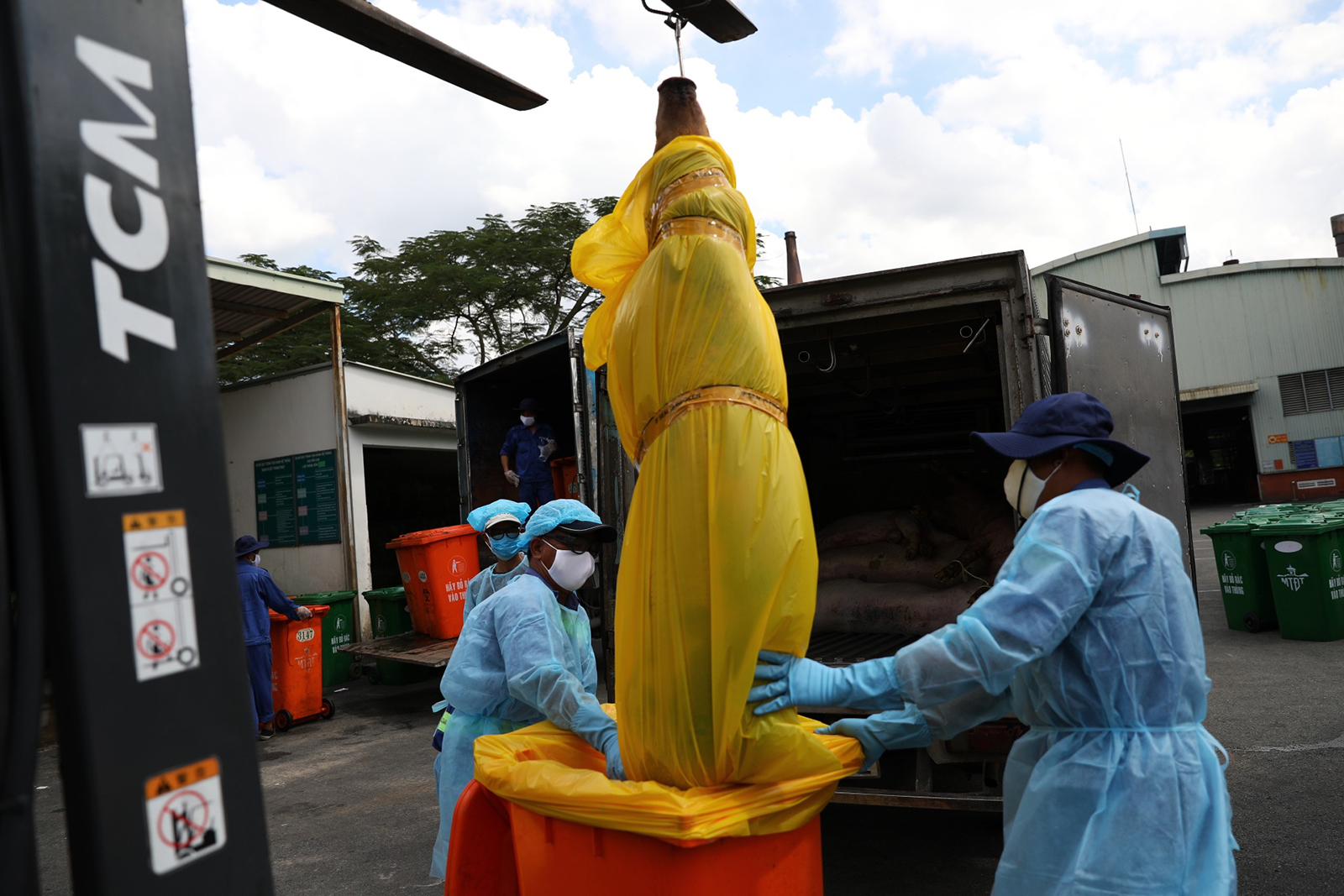 |
| Each pig is wrapped in a plastic bag and put into a garbage bin for storage while waiting to be incinerated. Photo: Tuoi Tre |
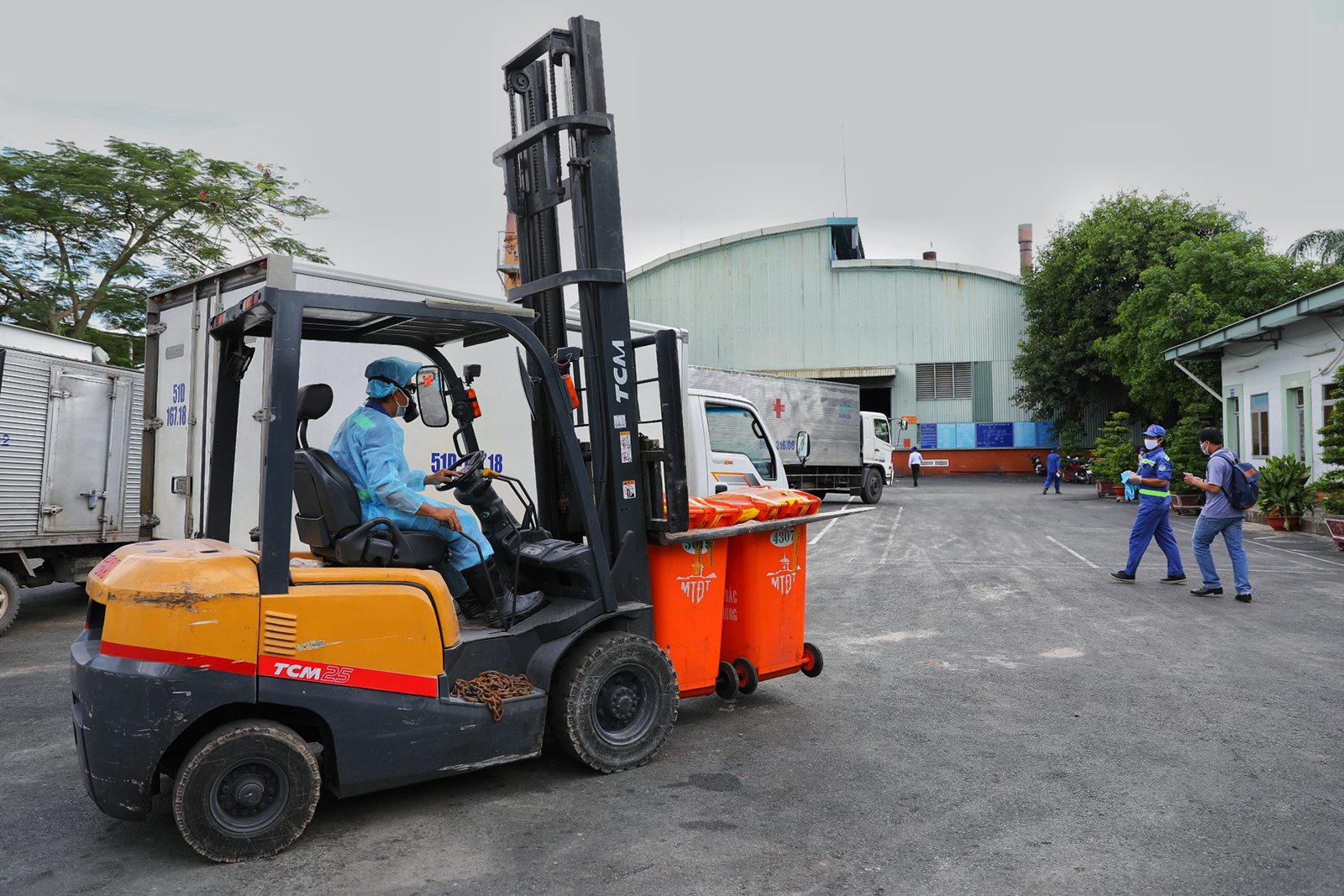 |
| Pigs are transported into the incinerator. Photo: Tuoi Tre |
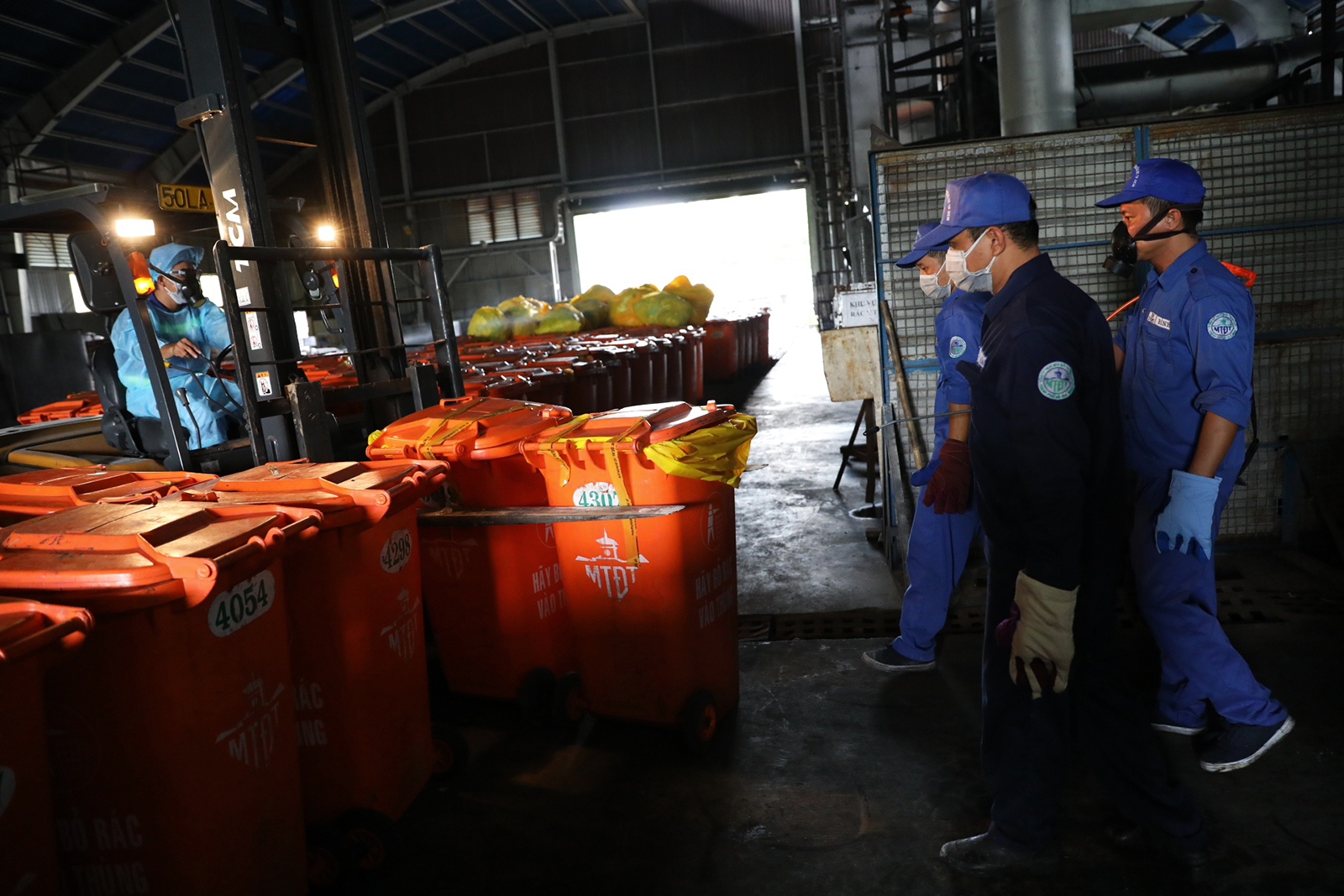 |
| Pigs are transported into the incinerator. Photo: Tuoi Tre |
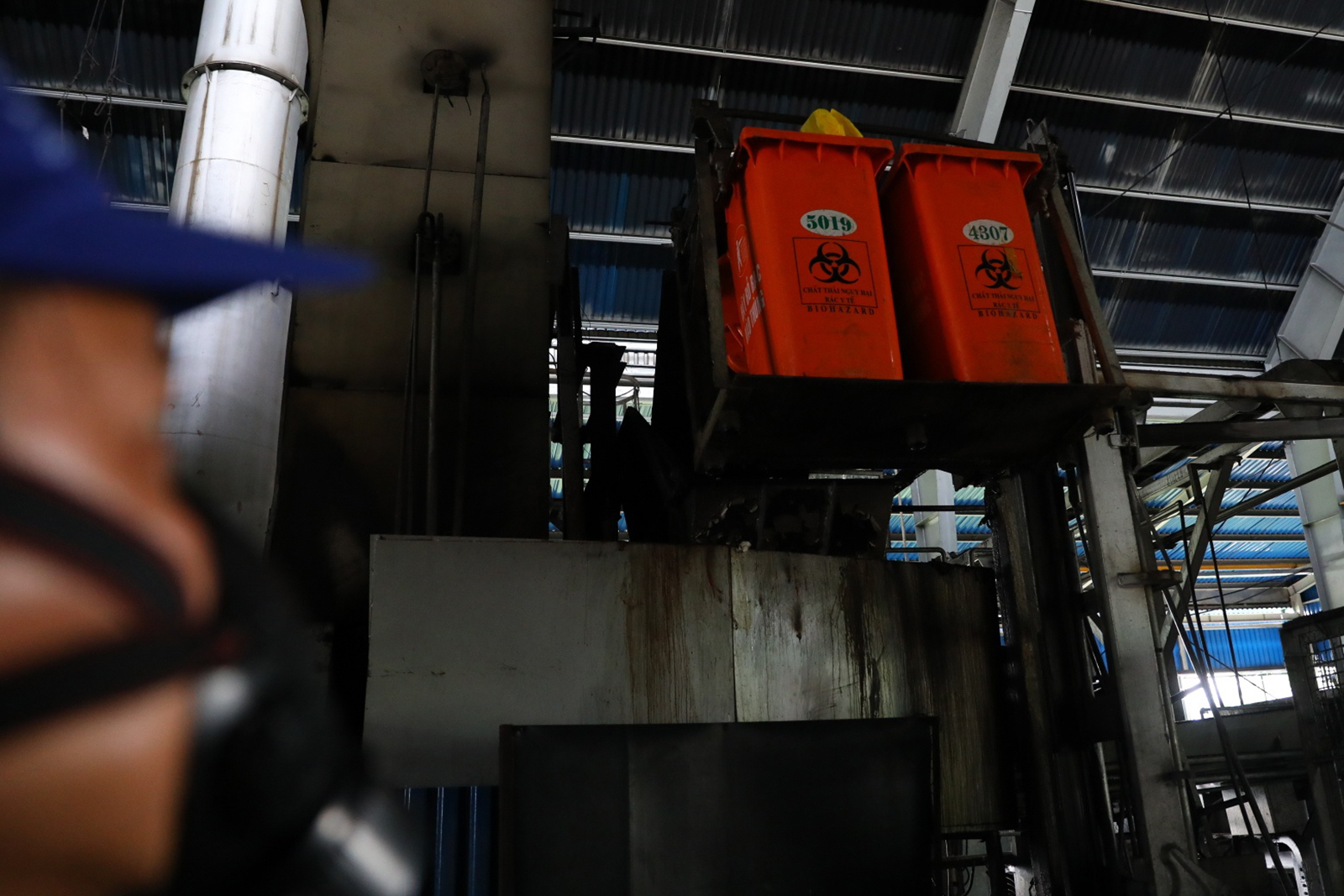 |
| Pigs are transported into the incinerator. Photo: Tuoi Tre |
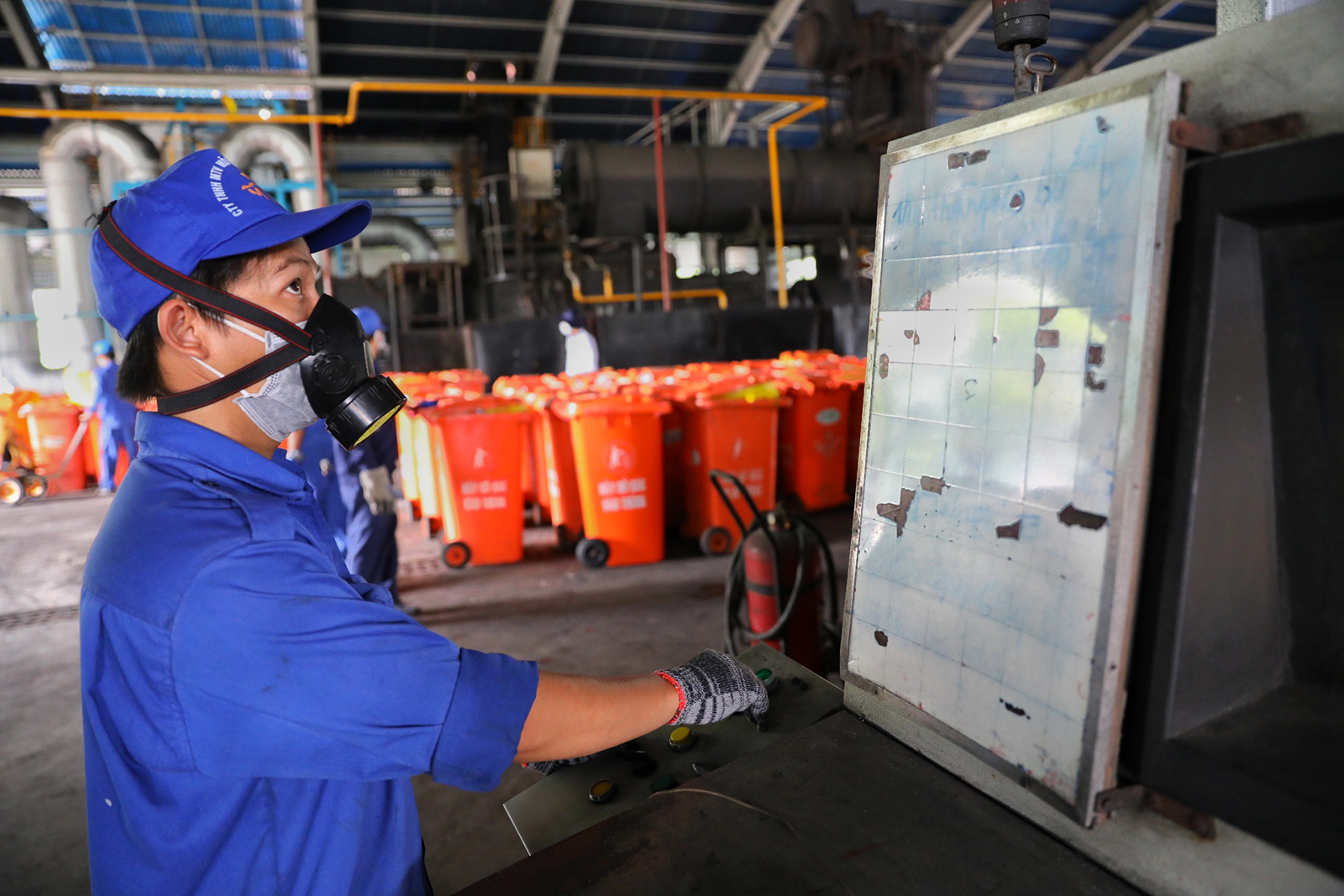 |
| A worker operates the incinerator. Photo: Tuoi Tre |
Like us on Facebook or follow us on Twitter to get the latest news about Vietnam!



